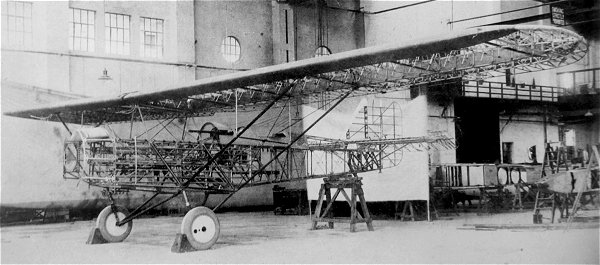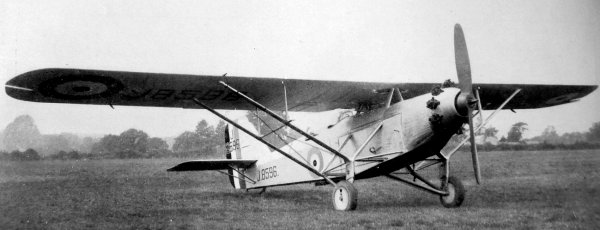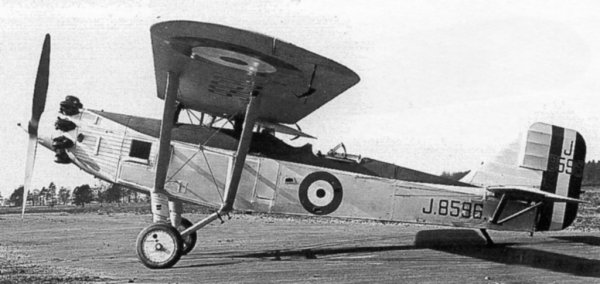Westland Witch
Westland Witch
A prototype day bomber
The Westland Witch was an unsuccessful bomber prototype, first flown in 1928. Only a single aircraft of this type was built.
The Witch was developed to Specification 23/25 for a single-engined day bomber operating at high altitude. This specification initially requested the use of the Bristol Orion, a turbocharged version of the Bristol Jupiter, but other variants of the Jupiter were substituted after development of the Orion encountered difficulties. All aircraft submitted to 23/25 suffered from engine problems, and none of them were put into production.
The Witch employed a strut-braced parasol monoplane configuration. The wing was of wood and steel construction and spanned a generous 61 ft (19 m). The fuselage was built from duralumin and steel tubes, covered with fabric, with an un-cowled Jupiter engine in the nose. The Witch had a crew of two, pilot and gunner / bombardier. The latter had a cockpit with a Lewis gun on a Scarff ring aft of the pilot, but could also employ this for a prone bomb-aiming position.
A bomb bay was incorporated in the fuselage in front of the pilot, with four doors which could be opened by the bombardier or would open under the weight of the dropped bombs. As specified in 23/25, a single 520 lb bomb could be carried, or a number of smaller weapons. The presence of a bomb bay in the fuselage required a complicated split-axle arrangement for the fixed undercarriage, which was braced to the fuselage and the wing struts. A cross-axle would have been in path of the falling bombs.
The prototype of the Witch, serial J8596, was first flown on 30 January 1928 at RAF Andover, with Louis Paget at the controls. The type was praised for its stability as a bombing platform, and its 138 mph maximum speed was good, although its 62 mph landing speed was felt to be too fast. However, the Witch was judged unsuitable for service due to structural weaknesses, including a number of failures of the landing gear struts and other components.
The same aircraft was nevertheless presented again the next year in Mk II form, with a Jupiter VIIIF engine replacing the earlier Jupiter VI, and was used for testing of parachutes until 1931.
![]()
| General characteristics | |
| Crew: | Two |
| Length: | 37 ft 8 in (11.48 m) |
| Wingspan: | 61 ft 0 in (18.59 m) |
| Height: | 11 ft 6 in (3.51 m) |
| Wing area: | 534 ft² (49.61 m²) |
| Empty weight: | 3,380 lb |
| Loaded weight: | 6,050 lb |
| Powerplant: | 1 × Bristol Jupiter VI, 420 hp (314 kW) |
| Performance | |
| Maximum speed: | 138 mph at 6,500 ft (222 km/h at 1,980 m) |
| Service ceiling | 19,000 ft (5,800 m) |
| Rate of climb: | 6,500 ft in 14 min 12 sec (1,380 m in 14 min 12 sec) |
| Production | |
| Number built: | 1 |
| First flight: | 30 January 1928 |
All the above text based on / 'borrowed' from Wikipedia.
gallery

Under construction - the only Westland Witch ever produced.

A three-quarter front view of the Westland Witch.

Photographed early 1929 with Bristol Jupiter III engine.